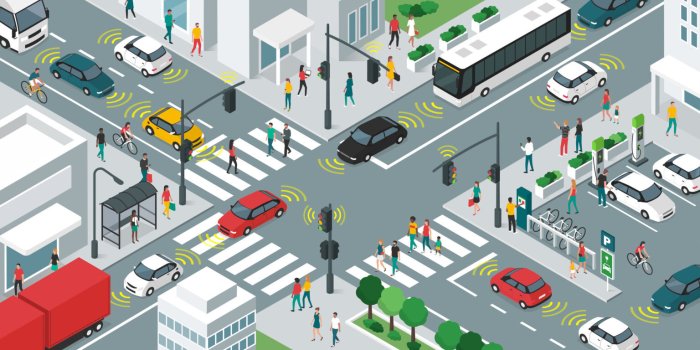K
Kathleen Martin
Guest
Not only do we need to facilitate more active travel modes and improve public transport reliability and uptake (while also reducing emissions), but also enhance connectivity and data between travel modes and understand its connection with other factors such as air quality and road safety.
But the technology that can address these issues is already at play. Real-world trials of AI and smart junctions have demonstrated a 23% reduction in journey times across a single junction. It signals a major step forward in creating the ability to optimise traffic flow without having to build more infrastructure or lay more tarmac. It’s ‘reimagining over rebuilding’ – and it’s making the future a reality.
Reducing congestion and emissions
Tackling congestion requires a collaborative effort. One that joins technological advancements such as smart junctions with schemes and campaigns that simultaneously encourage behaviour changes and introduce physical changes – driven by data – to enable such change.
Park and ride schemes have long been a method for encouraging public transport use in cities. For example, in Bristol, parking sites are located at four corners on the outskirts of the city. Parking is free, and you only pay the bus fare into the city. This concept has been joined by newer initiatives that look to tackle the problem within cities themselves with a more targeted approach. London has recently expanded its ULEZ and continued its roll-out of ‘Low Traffic Neighbourhoods’ and the School Streets scheme, with the intention of prioritising active travel modes and limiting private vehicle use.
Continue reading: https://citymonitor.ai/transport/smart-junctions-future-ai-roads
But the technology that can address these issues is already at play. Real-world trials of AI and smart junctions have demonstrated a 23% reduction in journey times across a single junction. It signals a major step forward in creating the ability to optimise traffic flow without having to build more infrastructure or lay more tarmac. It’s ‘reimagining over rebuilding’ – and it’s making the future a reality.
Reducing congestion and emissions
Tackling congestion requires a collaborative effort. One that joins technological advancements such as smart junctions with schemes and campaigns that simultaneously encourage behaviour changes and introduce physical changes – driven by data – to enable such change.
Park and ride schemes have long been a method for encouraging public transport use in cities. For example, in Bristol, parking sites are located at four corners on the outskirts of the city. Parking is free, and you only pay the bus fare into the city. This concept has been joined by newer initiatives that look to tackle the problem within cities themselves with a more targeted approach. London has recently expanded its ULEZ and continued its roll-out of ‘Low Traffic Neighbourhoods’ and the School Streets scheme, with the intention of prioritising active travel modes and limiting private vehicle use.
Continue reading: https://citymonitor.ai/transport/smart-junctions-future-ai-roads

